Urban Data Forest
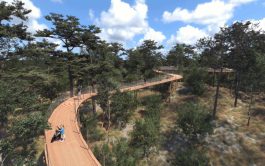
Project Details
Year
2022
Role
Concept Creation
Scenario Writing
Film-making
Research
Exhibited
ZKM Karlsruhe
Highlight Delft
Awards
EU Starts Prize, nominated (2022)
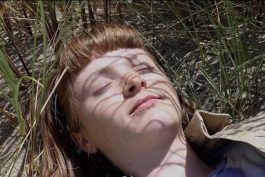

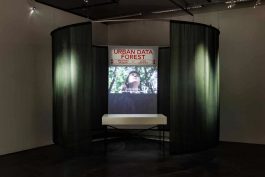
Urban Data Forest is a project and proposal to reimagine the city as a site of data storage in plants and trees.
Set in the city of The Hague, Netherlands, the Urban Data Forest represents regenerative and multispecies spaces to archive data. It explores the possibility of how cutting-edge DNA data storage technology could transform urban areas bringing data and nature, back to the city.
In modern cities, humans and machines produce petabytes of data everyday, placing an enormous strain on scarce energy resources and in turn emitting yet more carbon dioxide into the atmosphere. What if instead, we could gradually turn towards data architecture that brings us into greater symbiosis with the regenerative, living systems of the natural world.

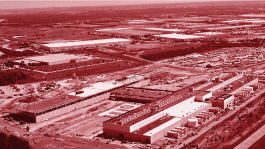

In this model, real-time data continues to flow to energy consuming silicon data centres. Biological data storage picks up the remaining slack – the approximately 60-80% of data stored in the cloud that is rarely if ever used, is archived in a low-energy, highly ecologically friendly data format.
Urban Data Forest extends this notion, with biological data storage facilities imagined as plant-rich spaces, filled with data encoded plant, shrub and tree varieties. This makes data storage truly environmentally friendly, allowing society to reap the benefits of big data, aids in the removal of carbon dioxide from the atmosphere and provides a rationale for the proliferation of nature in urban spaces.
Two types of Data Forest are proposed:
Living Archives and a Breathing Museum.
Breathing Museum

The Breathing Museum is an organic archive and contemporary cultural institute powered by DNA data storage technology in plants. It offers a calm, meditative space, where the public are invited to explore digital archives and cultural works through their contact with living organisms such as trees and shrubs.
As an organic archive, the Breathing Museum preserves significant local data, including scans of old maps, rare books and historical photos.
As a contemporary cultural institute, the Breathing Museum utilises a biological cloud to inspire new forms of interaction between culture and nature. A wide variety of experiences and performances are also situated here in synergy and symbiosis with the data, flora and fauna.

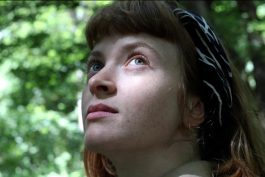
Living Archives

Living Archives are urban data forests offering local citizens a way to store their digital files in the DNA of living plants and trees.
Rather than storing their data in far flung, carbon emitting server farms, citizens and communities can obtain plots for themselves in nearby data forests to grow and care for their data. From family pictures to their favourite NFTs, these forests act as truly local and personal archive facilities.
Data may be open-source or encrypted depending on the type of data and needs of the citizen. To secure organism preservation, protocols are put in place to help citizens retrieve data in a way that respects the natural growth cycle of the plant life that carries it.
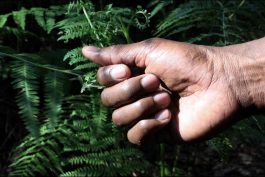
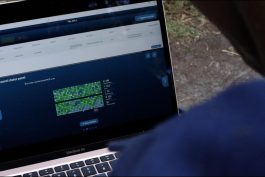
New Jobs in
the Data Forest

We can imagine that if Data Forests were to exist, they might become a site where local citizens and new types of workers collaborate to preserve data and the living organisms which carry it.
New roles might emerge including Bio-archivists who know everything about the data stored in the plants. Data Migration teams keep everyone updated with how data is spreading in the forest through pollination. Data Harvesters are specialised foragers who care for plants and the data inside.
To bring all of these stories to life in these envisioned data forests, two films produced to help give a complex technical and urbanisation research project a more immersive and human touch.
Each forest features carefully selected species of plants, trees and shrubs that can flourish as part of the local habitat. Considerations were made at a more holistic level, for example the practicalities of data storage are weighed equally with considerations of ecological benefit.
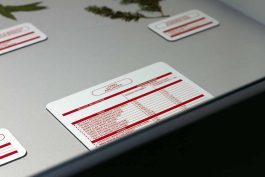
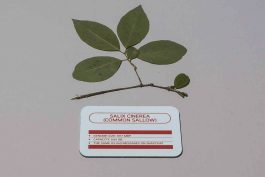

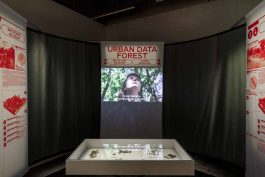
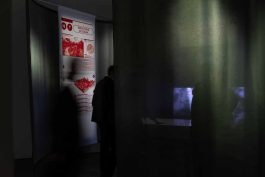
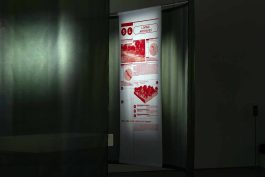
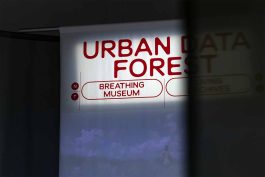

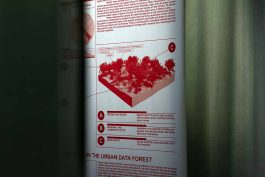
The Urban Data Forest was first exhibited at ZKM, Karlsruhe (2022) and has since been exhibited at Highlight Festival (2023). The purpose of the installation is to communicate a vision of working with nature as technology for data storage, encouraging visitors to see an opportunity for new symbiotic relationships with other organisms that might promote regeneration and healing in place of destruction and extraction.
The installation immerses visitors in the vision of nature-as-technology for data storage, sparking contemplation of alternative futures. This paradigm repositions data as a transformative asset, capable of reintroducing nature into urban environments, rejuvenating the environment, and inspiring a reimagined, regenerative urban landscape.

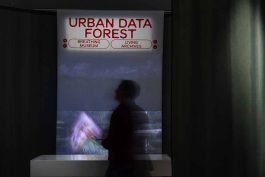
Project Credits
Created by
Cyrus Clarke, Monika Seyfried
Visual Identity & Installation Photography
Design Collaborator
Connor Dolan
Project Advisor
In4Art
Plant Samples
Delft Botanical Garden
Actors
Christopher Cadostin
Monja Simon
Awards
EU S+T+ARTS Prize 2023 (Nominated)
Exhibits
ZKM Karlsruhe (2022)
Highlight Delft (2023)
Acknowledgements
Urban Data Forest was created as part of Repairing the Present, an EU S+T+ARTS Residency. The project was developed in collaboration with and co-commissioned by In4Art and engineering firm Witteveen+Bos, supporting research into an environmental vision for the city of The Hague (NL) in 2050.


Urban Data Forest

Project Details
Year
2022
Role
Concept Creation
Scenario Writing
Film-making
Research
Exhibited
ZKM Karlsruhe
Highlight Delft
Awards
EU Starts Prize, nominated (2022)

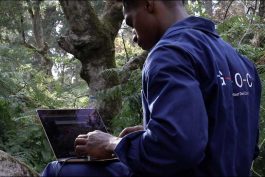
Urban Data Forest is a project and proposal to reimagine the city as a site of data storage in plants and trees.
Set in the city of The Hague, Netherlands, the Urban Data Forest represents regenerative and multispecies spaces to archive data. It explores the possibility of how cutting-edge DNA data storage technology could transform urban areas bringing data and nature, back to the city.
In modern cities, humans and machines produce petabytes of data everyday, placing an enormous strain on scarce energy resources and in turn emitting yet more carbon dioxide into the atmosphere. What if instead, we could gradually turn towards data architecture that brings us into greater symbiosis with the regenerative, living systems of the natural world.

In this model, real-time data continues to flow to energy consuming silicon data centres. Biological data storage picks up the remaining slack – the approximately 60-80% of data stored in the cloud that is rarely if ever used, is archived in a low-energy, highly ecologically friendly data format.
Urban Data Forest extends this notion, with biological data storage facilities imagined as plant-rich spaces, filled with data encoded plant, shrub and tree varieties. This makes data storage truly environmentally friendly, allowing society to reap the benefits of big data, aids in the removal of carbon dioxide from the atmosphere and provides a rationale for the proliferation of nature in urban spaces.
Two types of Data Forest are proposed:
Living Archives and a Breathing Museum.
Breathing Museum

The Breathing Museum is an organic archive and contemporary cultural institute powered by DNA data storage technology in plants. It offers a calm, meditative space, where the public are invited to explore digital archives and cultural works through their contact with living organisms such as trees and shrubs.
As an organic archive, the Breathing Museum preserves significant local data, including scans of old maps, rare books and historical photos.
As a contemporary cultural institute, the Breathing Museum utilises a biological cloud to inspire new forms of interaction between culture and nature. A wide variety of experiences and performances are also situated here in synergy and symbiosis with the data, flora and fauna.


Living Archives

Living Archives are urban data forests offering local citizens a way to store their digital files in the DNA of living plants and trees.
Rather than storing their data in far flung, carbon emitting server farms, citizens and communities can obtain plots for themselves in nearby data forests to grow and care for their data. From family pictures to their favourite NFTs, these forests act as truly local and personal archive facilities.
Data may be open-source or encrypted depending on the type of data and needs of the citizen. To secure organism preservation, protocols are put in place to help citizens retrieve data in a way that respects the natural growth cycle of the plant life that carries it.


New Jobs in
the Data Forest

We can imagine that if Data Forests were to exist, they might become a site where local citizens and new types of workers collaborate to preserve data and the living organisms which carry it.
New roles might emerge including Bio-archivists who know everything about the data stored in the plants. Data Migration teams keep everyone updated with how data is spreading in the forest through pollination. Data Harvesters are specialised foragers who care for plants and the data inside.
To bring all of these stories to life in these envisioned data forests, two films produced to help give a complex technical and urbanisation research project a more immersive and human touch.
Each forest features carefully selected species of plants, trees and shrubs that can flourish as part of the local habitat. Considerations were made at a more holistic level, for example the practicalities of data storage are weighed equally with considerations of ecological benefit.









The Urban Data Forest was first exhibited at ZKM, Karlsruhe (2022) and has since been exhibited at Highlight Festival (2023). The purpose of the installation is to communicate a vision of working with nature as technology for data storage, encouraging visitors to see an opportunity for new symbiotic relationships with other organisms that might promote regeneration and healing in place of destruction and extraction.
The installation immerses visitors in the vision of nature-as-technology for data storage, sparking contemplation of alternative futures. This paradigm repositions data as a transformative asset, capable of reintroducing nature into urban environments, rejuvenating the environment, and inspiring a reimagined, regenerative urban landscape.


Project Credits
Created by
Cyrus Clarke, Monika Seyfried
Visual Identity & Installation Photography
Project Advisor
In4Art
Plant Samples
Delft Botanical Garden
Design Collaborator
Connor Dolan
Actors
Christopher Cadostin
Monja Simon
Awards
EU S+T+ARTS Prize 2023 (Nominated)
Exhibits:
ZKM Karlsruhe (2022)
Highlight Delft (2023)
Acknowledgements
Urban Data Forest was created as part of Repairing the Present, an EU S+T+ARTS Residency. The project was developed in collaboration with and co-commissioned by In4Art and engineering firm Witteveen+Bos, supporting research into an environmental vision for the city of The Hague (NL) in 2050.





© Cyrus Clarke 2025